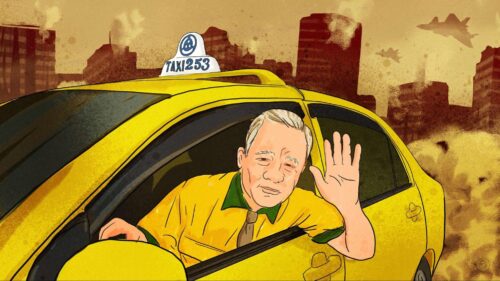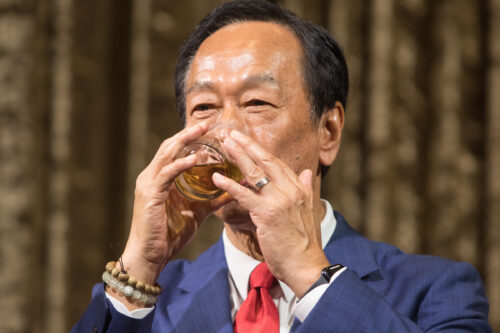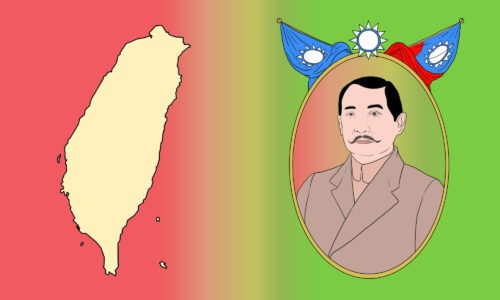
China's two Palace Museums — one in Beijing, one in Taipei — both claim theirs is the real, legitimate museum. It's a story steeped in history and the cross-strait rivalry.

On the night of November 5, 1924, forces from the warlord Féng Yùxiáng 冯玉祥 pounded on the entrance to the rear of the Forbidden City. A few days before, Feng had captured Beijing; now, he was going to compel the emperor to leave his palace.
For more than a decade after the Qing Dynasty fell, the emperor Pǔyí 溥仪 had been allowed to reside in the back half of his palace, holding court, keeping eunuchs and the treasures that emperors had gathered over centuries. Puyi refused to sign the documents Feng demanded he sign, instead fleeing the palace in the dead of night, leaving most of his possessions behind.
This marked the beginning of the Palace Museum — both of them.
Less than a year after Puyi fled, the youthful Republic of China (ROC) transformed his palace into a museum, and the public’s response was remarkable. In the first two days, the museum saw 50,000 visitors flock to see the imperial treasures they had only previously heard about. The museum continued to welcome visitors for several years, but history soon intervened. With the Japanese invasion of Manchuria in 1931, the leaders of the ROC grew increasingly concerned for the safety of the exhibits. Much of the museum’s most precious artifacts were packed up in crates and sent into South China.
With Japan’s invasion continuing into large cities, the ROC again began to shuffle the artifacts around China, though this time the stakes were higher. There were numerous close calls. One shipment of artifacts was transported out of a Confucian temple in Wuhan just a day before the temple was destroyed. Another shipment was moved out of a library in Changsha just before the Japanese bombed the library. A different shipment was being lugged over the Qinling Mountains, going from Shaanxi to Sichuan province, when the trucks got caught in a blizzard. The snow got too deep, so the artifacts and the men guarding them were stranded — the men starving — for two days until a rescue mission reached them. In the schlepping of thousands of crates across a war-torn continent, not a single one of these priceless pieces was lost.
The war against Japan ended, but not the battle for China’s imperial treasures. The Chinese Civil War would rage for four more years. Having barely had time to unpack all the artifacts, they were again packed up. In 1948, as the ROC realized it might lose, Chiang Kai-shek (蒋介石 Jiǎng Jièshí) personally ordered the artifacts moved to Taiwan.
Just as during the war against the Japanese, this movement came with its own set of stories, many involving treachery. Ma Heng, one of the people in charge of the Museum’s Beijing location, defected from the ROC to the Communists. During the evacuation, he was ordered to send artifacts from Beijing, but for months, he made excuses, saying that the weather was not right. The artifacts never made it out; in 1949, Ma was rewarded with a post in the People’s Republic of China’s Palace Museum.
Further south, as the KMT was transporting thousands of crates onto ships, the CCP infiltrated the dock’s stevedores, convincing them to slow-walk the loading of artifacts so that only three of the planned five ships were able to be filled. In the end, 3,824 cases, about 20% of the museum’s artifacts, made it to Taiwan, but this was the cream of the museum’s collection.
As Beijing and Taipei settled into a Cold War stalemate, the two museums bifurcated, each mirroring their respective states. Born out of the same parent museum, the sibling museums with almost the same name (the PRC refers to its museum as the Palace Museum, while in Taiwan, the museum is known as the National Palace Museum) are remarkably different. When explaining the difference between the two museums, I find it helpful to think of how the two museums emphasize different parts of their English name.
The Beijing museum emphasizes the Palace more than the Museum. In 2006, when I first visited, I did not see a single artifact, other than the architecture. If you wanted to enter the part of the museum with the artifacts, you needed to buy a separate ticket.
The Beijing museum deemphasizes artifacts because the PRC has long felt anxiety over its trove. Even though it retained around 80% of the original collection, the best artifacts went to Taiwan.
In Taipei, the opposite is true. The National Palace Museum in Taiwan is all Museum, no Palace. This is the best collection of Chinese art anywhere in the world, and the museum highlights this collection with pride, though deemphasizing how the objects got there. At any given time, the museum has space to display a fairly small amount of the objects it actually has, approximately 1%. Every three months it cycles in many new exhibits, though some of the most popular exhibits are permanent, like the Jade Cabbage, which is exactly what it sounds like: a piece of jade that has been carved to look uncannily similar to a cabbage.
Which museum is the real Palace Museum? As with so many questions in Asian geopolitics, your answer will depend on how you understand the tension between Beijing and Taipei. Whatever your answer, both the Beijing and Taipei museums offer excellent online versions of their collections, which make for fun ways to while away some hours. This is something we can all agree on.







